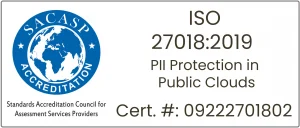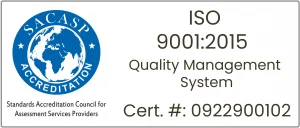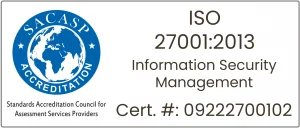Traverse the article
- Implement Data Governance Framework
- Adopt Innovative Data Integration Methods
- Data Cleansing and Enrichment Capabilities
- Leverage External Partnerships for Enhanced Validation
- Customisable Validation Rules
- Implement Extensive Audit Trails
- Conducting SCV Dry Run
- Promote a Culture of Compliance through Training and Awareness
- Embedding SCV in Business Continuity and Crisis Management
- Streamline Reporting Processes
- Constant Monitoring and Adjustment to Regulatory Modifications
- Robust Security and Compliance Features
The UK insurance sector covers a remarkably diverse array of life and general health insurers, underpinned by back-office functions of astute underwriting, efficient claims, prudent investment management, and loyal customer care. Behind these processes lies the integral role of data management in influencing every part of an insurer’s capacity to function effectively and meet its obligations.
In this complex ecosystem, the Financial Services Compensation Scheme serves as a lifeline, protecting policyholders’ interests in the event of firm insolvency. This protection reinforces the regulatory requirement for UK insurance companies to meet rigorous standards i.e. timely and accurate reporting of Single Customer View reports.
Though commonly viewed as a simple compliance obstacle, effective SCV reporting is more than this narrow perspective. It is a valuable chance for insurers to improve their operational effectiveness, support risk management systems, and ultimately secure a competitive advantage in a highly regulated world. It is not simply compliance mastery; it is a strategic necessity for long-term success within the UK insurance sector.
Deciphering SCV Requirements for UK Insurance Companies
Navigating the complex regulatory terrain is of vital importance to UK insurance companies, and familiarity with the particular SCV requirements is therefore essential.
Effective regulatory reporting for insurance firms relies on strong data management. The requirements of the single customer view demand careful aggregation of data and uncompromising accuracy in all interactions with customers and product holdings. Proactive steps are imperative to maintaining continuous audit readiness.
Creating open processes, maintaining ironclad data integrity, and fostering a compliance culture are not only best practices— they are bedrock pillars in maneuvering the regulatory labyrinth and ensuring the future of your insurance firm.
Navigating Potential SCV Reporting Scenarios and Inherent Challenges
The insurance industry’s diverse operational and customer profiles add to the complexity of SCV reporting. Let us discuss the typical scenarios and the associated challenges:
Scenario 1: High Customer Volume and Complex Customer Profiles
Insurance companies having a huge and diversified client base, high net worth clients possessing complex portfolios crossing multiple products, encounter unique challenges in SCV reporting.
Challenges Faced
- Outdated Infrastructure: Extracting and aggregating data from old systems becomes increasingly difficult with high volumes. These systems, typically built for less complex product structures, cannot cope with the complexity of today’s insurance products and the sheer volume of data needed to support a complete SCV.
- Entangled System Interoperability: As customer information is held in many separate siloed systems—policy administration, claims, CRM, and investment platforms—building a single view involves intricate and frequently breakable integrations, heightening the potential for errors and delays.
- Manual Bottlenecks: Manual procedures struggle to cope with the sheer amount of data and complexity, resulting in operational inefficiencies. Data reconciliation, duplicate identification, and accuracy across a large customer base becomes time-consuming and resource-intensive, risking reporting timelines.
- Gaps in Essential Information Capture: Incomplete or missing information because of inconsistent data capture processes between different systems or historical data gaps can result in an incomplete view of the customer relationship.
- Inconsistencies in Identification and Contact Information: Differences in name structures, out-of-date addresses, and inconsistent identification numbers can prevent the proper matching and merging of customer information.
- Policy and Coverage Details Errors: Policy details, coverage, and beneficiary information errors can occur when dealing with a large number of insurance products. Maintaining the accuracy of these fine-grained details necessitates strong data validation and reconciliation controls.
Scenario 2: Increased Regulatory Focus
Insurance companies come under added pressure on their SCV reporting capabilities when they face enhanced regulatory scrutiny due to their size, perceived risk, or previous occurrences.
Challenges Faced
- Shortage of Expertise and Knowledge: Insufficient knowledge about the system or the regulatory requirements can be especially harmful. Lacking familiarity with the new SCV requirements and the firm’s system capabilities can result in non-compliance and additional regulatory issues.
- Increased Resource Requirements: Regulators can call for more intense and comprehensive reports, which will require extensive manual checks to be thorough and accurate, putting a strain on operational resources.
- Sensitivity to Information Security: Any breach of data or mishandling of customer data can incur serious regulatory consequences, necessitating the implementation of strong security practices and data protection legislation.
Scenario 3: Data Complexity Due to Siloed and Multiple Systems
Insurance companies with a disparate IT environment, where there are many legacy and contemporary systems with no optimal interoperability, face high data complexity in SCV reporting.
Challenges Faced
- Complicated Integration and Transformation of Data: Creating and sustaining intricate ETL (Extract, Transform, Load) processes for shuffling data between incompatible systems is time-consuming and error prone.
- Ineffective Manual Handling of Data: Manual processes of data extraction, transformation, and loading are slow; they raise the likelihood of human error and impede the timeliness of SCV reporting.
- Duplicate Information: Unsynced customer data from different systems creates duplicate data. Not only does it add unnecessary storage to the data, but it also brings inconsistency and ambiguity while trying to present an accurate single customer view.
- Blocked Holistic Customer Insight: Data silos erode the fundamental purpose of SCV reporting. In the absence of a consolidated view, it is difficult to make accurate judgments on a customer’s overall relationship with the firm and their overall protected holdings.
Scenario 4: Legacy Burden and Ineffective Bespoke Systems
Insurance companies are heavily reliant on legacy or bespoke systems, which lack the flexibility and functionality required for modern reporting and have special challenges.
Challenges Faced
- Data Accessibility Limitations: These systems do not have the necessary data fields to collect detailed customer or policy information needed by current FSCS regulations, reporting tools, or the computing power to generate the required information effectively.
- Complex Integration with New Tools: Difficulty in integration with newer technologies and data management tools keeps legacy systems isolated, making SCV reporting complex.
- Manual Workaround: Manual interventions are required to fill the functionality gaps in legacy systems and heighten the risk of inaccuracies and delays in SCV reporting.
- Compromised Data Integrity: Such systems might lack strong data validation tests to verify the accuracy and integrity of customer and policy data.
Strategic Approaches to Efficient FSCS SCV Reporting in UK Insurance Firms
Accurate reporting is a determining factor in sustaining trust and integrity within the financial system. Companies need to implement strategic measures that assure compliance, simplify operations, and improve data management processes. Essential strategies that insurance companies can utilise to maximise FSCS SCV reporting include:
Implement Data Governance Framework
An effective data governance framework forms the basis of successful SCV reporting. It consists of a number of key components:
- Policy Development: Develop and establish complete data governance policies that state data ownership, usage rights, and compliance needs. Policies in clear terms ensure processes are simplified and confusion eliminated.
- Data Stewardship: Assign data stewards who will be charged with ensuring data accuracy, consistency, and security throughout every customer dataset.
- Data Quality Standards: Establish data quality standards that describe acceptable data attributes such as accuracy, completeness, and timeliness. Standardising these measures enables uniform validation and reporting procedures.
Actionable Insights:
Through the combination of these components, insurance firms can manage data quality concerns in a structured manner and optimise the SCV reporting process, mitigating data silo risks and inconsistencies.
Adopt Innovative Data Integration Methods
To efficiently produce SCV reports, insurance companies need to consolidate data from multiple data sources and accounting platforms. This process should employ sophisticated technologies like Application Programming Interfaces (APIs) to efficiently collect and cleanse customer and account data. Data extraction via automation not only minimises the chances of human errors but also accelerates the data aggregation process so that the SCV reporting is both prompt and precise.
Actionable Insights:
Utilise robust data integration solutions such as Macro Global’s FSCS SCV Enterprise Solution Suite, which can map multiple data sources and provide complete data validation.
Data Cleansing and Enrichment Capabilities
Data cleansing ensures that the datasets are clean, precise, and usable by spotting duplicates, standardising data entry formats, and automatically flagging inaccuracies or anomalies to be checked and corrected, thus eliminating redundancy in customer records. Additionally, validated data must be enriched by adding more information from valid external sources (such as FCA, Royal Mail, etc.), ensuring data integrity and minimising compliance risks. With significant audit checkpoints, insurance companies can leverage machine learning algorithms to carry out comprehensive validation and data transformation. This improves the quality and completeness of the SCV data, offering a comprehensive picture of the customer.
Actionable Insights:
Invest in smart validation technologies using AI fuzzy logic to detect inconsistencies and automate data cleansing processes & enrichment capabilities, thereby increasing report accuracy.
Leverage External Partnerships for Enhanced Validation
Collaboration with third-party data sources makes SCV reports more accurate and reliable. With integration into reputable databases for purposes of validation, including Companies House and OFAC, insurance companies can cross-validate customer information, minimising the potential for discrepancies.
Actionable Insights:
Establish solid collaborations with third-party data providers in to design a real-time data validation framework that protects against potential data inaccuracy.
Customisable Validation Rules
Configuring the SCV reporting process in a manner that caters to special organisational needs guarantees insurance firms the ability to tackle their exclusive compliance requirements while remaining committed to larger regulatory requirements across the industry.
Actionable Insights:
Opt for the SCV suite that supports customisable banking setups, allowing business houses to define individual validation rules, exclusions, and business logic.
Implement Extensive Audit Trails
Capturing a complete history of audits is vital for data quality benchmarking and tracking remediation. Such information enables companies to track modifications, gauge data integrity by way of time, and offer supporting documentation to regulatory entities. A transparent audit trail will strengthen compliance activities and improve stakeholder confidence.
Actionable Insights:
Use intelligent platforms that provide real-time audit trails and enable the comparison of data across periods, enabling proper remediation effort tracking.
Conducting SCV Dry Run
Running SCV dry runs bi-annually is an important proactive action for insurance companies. They thoroughly check data readiness, ensuring that all relevant customer information is properly and readily available for FSCS reporting. In addition, they test the firm’s reaction time in producing and delivering the SCV, highlighting internal process and system performance bottlenecks and areas of improvement.
Actionable Insights:
Implement a detailed dry run plan and automate data extraction and aggregation, using comprehensive regulatory software to shield for FSCS SCV reporting risks. Run mock failure scenarios, test the resilience of systems, and record results for remediation plans. Engage cross-functional teams for alignment between IT, compliance, and operations. Monitor key performance indicators to track data retrieval time, error rates, and overall process efficiency.
Promote a Culture of Compliance through Training and Awareness
Insurance companies must place emphasis on training their staff on the significance of FSCS reporting, the possible repercussions of non-compliance, and efficient data management procedures. This shift in the culture toward compliance can significantly improve operational efficiency.
Actionable Insights:
Organise regular workshops and training sessions emphasising regulatory reporting best practice and data management to ensure all employees are prepared to maintain compliance levels.
Embedding SCV in Business Continuity and Crisis Management
A strong compliance culture goes beyond business routine operations. It needs to be part of the insurer’s broader wind-down or recovery strategy. Embedding SCV in this way ensures that even in times of extreme stress or potential failure, the processes for generating and filing correct SCV data are preserved and prioritised.
Actionable Insights:
Insurance firms must give SCV data retrieval and reporting top priority, with clear responsibilities and backup procedures in the event of system failures or staff unavailability via the Business Continuity Plan and Crisis Response Plan. Firms must simulate tests to verify the robustness of SCV workflow under adverse situations. Train assigned teams in SCV data access, extraction, and reporting procedures with relevant skills for self-execution. Store offsite copies of key SCV data and reporting tools for availability of data in the event of on-site loss. Have specific communication procedures for SCV reporting in times of crisis to provide timely and accurate information exchange to concerned stakeholders, such as regulatory agencies.
Streamline Reporting Processes
Insurance companies ought to prioritise automating the SCV report generation process so that they can create reports quickly and accurately. By adopting an All-in-One FSCS SCV Enterprise Solution, the reporting workflow can be streamlined, reducing manual interventions that may introduce errors.
Actionable Insights:
Adopt platforms that provide effortless integration among data mining, cleansing, and report generation capabilities to facilitate compliance reporting in straightforward steps.
Constant Monitoring and Adjustment to Regulatory Modifications
The regulatory environment is ever-changing, and insurance companies need to be proactive to keep up with emerging compliance needs. Firms need to put in place mechanisms of periodic review of their compliance procedures and stay alert to changes in information from the regulatory authorities in relation to FSCS requirements.
Actionable Insights:
Establish a specialised compliance task force whose mandate is to track regulatory developments and make requisite adjustments to comply with FSCS requirements.
Robust Security and Compliance Features
Protecting sensitive customer data throughout the SCV reporting lifecycle is of utmost importance for insurance companies to prevent expensive data breaches and regulatory fines and to sustain unwavering customer trust. A layered, strong security stance, highly attuned to FSCS compliance and industry best practices, is significant.
Actionable Insights:
Enact Role-Based Access Control by establishing clear access rights in terms of job roles so that only legitimate personnel can access particular SCV information and features. Keep comprehensive audit logs of all access requests, changes, and reporting actions for accountability.
Pre-emptively detect and rectify possible security loopholes in systems that deal with SCV information. Have VAPT scope clearly cover FSCS reporting procedures and compliance requirements, conducting realistic attack simulations to verify robustness.
Enforce MFA as an obligatory security feature, especially while accessing Personally Identifiable Information (PII) essential for SCV reporting. This greatly lowers the threat of unauthorised access even if credentials have been breached.
Implement strict segregation of duties in the SCV lifecycle to reduce the risk of single points of failure and internal fraud. For instance, the staff handling data ingestion must be different from those who review, approve, and submit the final SCV report.
Apply strong encryption algorithms to safeguard sensitive customer information during transmission over networks as well as while stored in databases and systems utilised for SCV reporting, limiting the effect of possible interception or unauthorised access.
Incorporate real-time monitoring systems to continuously scan for suspicious behaviour and security incidents pertaining to SCV data access and processing, allowing for rapid detection and response.
To Sum up
Macro Global’s SCV Enterprise Suite consisting of SCV Forza & SCV Alliance provides insurance firms with a comprehensive solution for managing Single Customer View (SCV) reports and simplifying the entire reporting process. With its powerful data integration feature, the suite seamlessly collates customer data from various data sources including core banking systems for thorough and correct reporting.
The suite leverages more than 175 AI-based audit checkpoints to validate data integrity and conduct auto-data cleansing with minimal human error. Its feature-rich third-party integration allows for cross-validation with major databases for increased report reliability. The solution also stores complete audit history to ensure transparency and compliance monitoring, while the customisable user management accommodates role-based access for sensitive information protection. In addition, SCV Enterprise Suite maintains data privacy by following the ISO standards and top-notch encryption methods.
With automation and simplified reporting, insurance companies can gain efficiency, accuracy, and compliance, eventually achieving trust among stakeholders and regulators.
Talk to our consultants and prepare your organisation's regulatory compliance roadmap
Book a Free Consultation
Transform your FSCS SCV reporting today with our all-in-one Enterprise Solution Suite! Reach us to know more!
Related Posts
Best Practices & Strategies Guide for Asset Management & Investment Firms Generate FSCS SCV Reports
Learn how asset management firms can effectively manage their FSCS compliance obligations through robust SCV reporting strategies.
Navigating the Future of Digital Wallets Amid Big Tech Challenges
Discover how Digital Wallets are transforming payments, the challenges they face, and what the future holds for secure digital transactions.
Defining Your Regulatory Roadmap: Technology, Data Compliance, and Security
Create a sustainable compliance strategy that positions your FI's for long-term success. Learn how to anticipate regulatory changes, leverage technology, and build a resilient compliance framework.



















